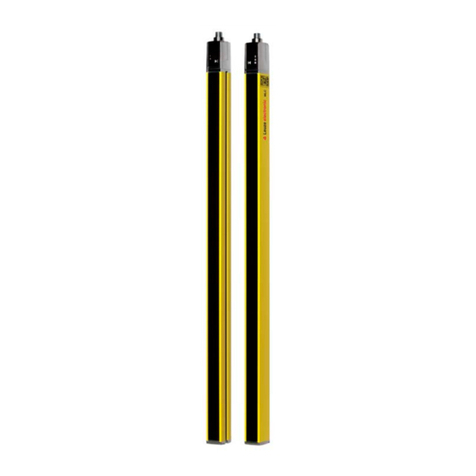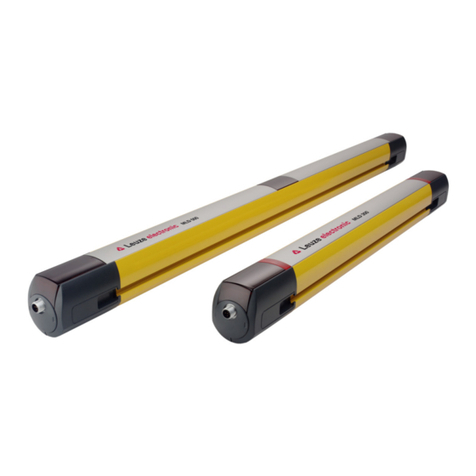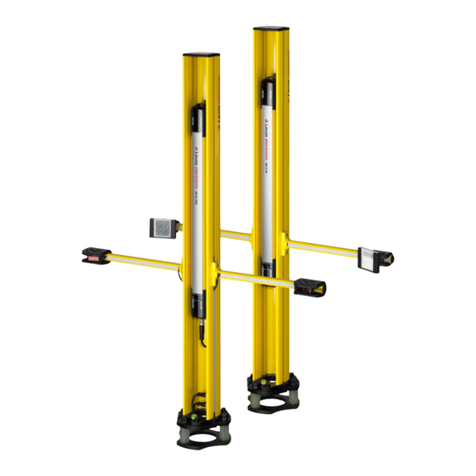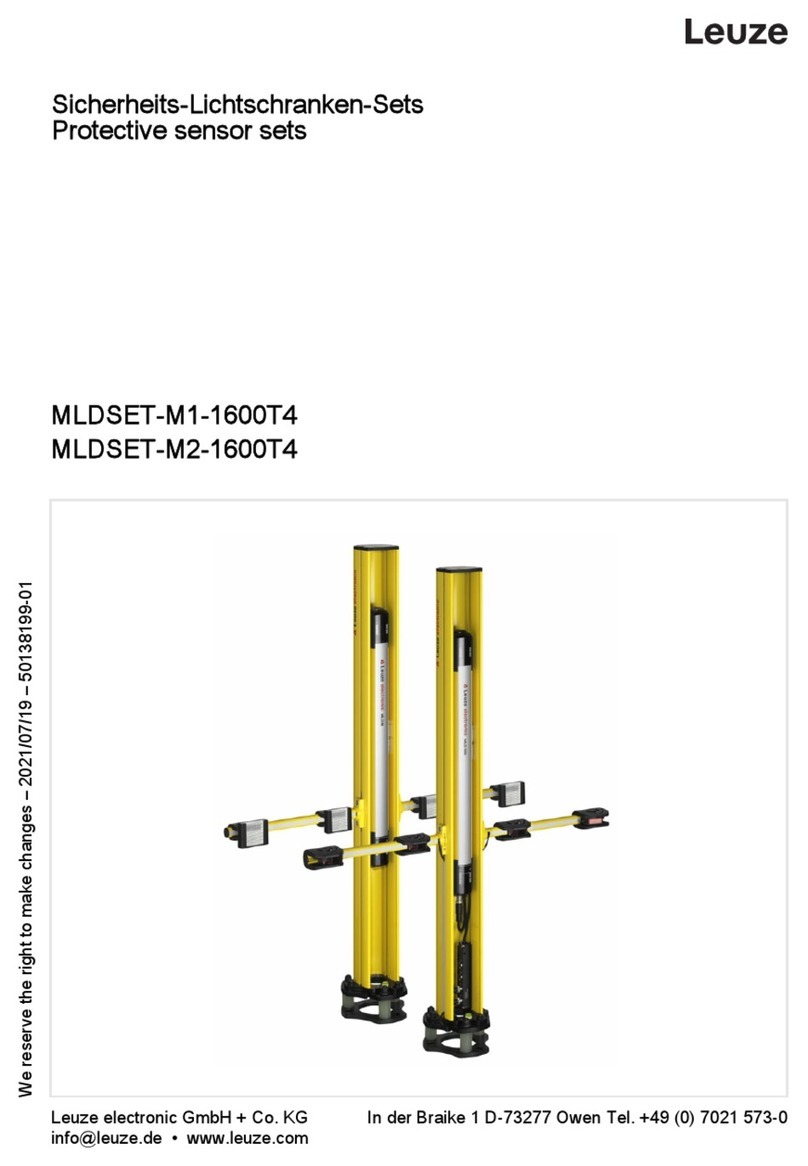
Table of contents
Leuze electronic GmbH + Co. KG MLC 100 3
Table of contents
1 About this document ............................................................................................5
1.1 Used symbols and signal words ............................................................................................. 5
1.2 Checklists................................................................................................................................ 6
2 Safety .....................................................................................................................7
2.1 Intended use and foreseeable misuse.................................................................................... 7
2.1.1 Intended use........................................................................................................................7
2.1.2 Foreseeable misuse ............................................................................................................8
2.2 Necessary competencies........................................................................................................ 8
2.3 Responsibility for safety........................................................................................................ 10
2.4 Disclaimer ............................................................................................................................. 10
3 Device description ..............................................................................................11
3.1 Device overview of the MLC family....................................................................................... 11
3.2 Connection technology ......................................................................................................... 12
3.3 Display elements .................................................................................................................. 13
3.3.1 Operating indicators on the MLC100 transmitter..............................................................13
3.3.2 Operating indicators on the MLC110 receiver..................................................................14
4 Functions.............................................................................................................15
4.1 Transmission channel changeover ....................................................................................... 15
4.2 Operating range selection..................................................................................................... 15
5 Applications ........................................................................................................16
5.1 Point of operation guarding................................................................................................... 16
6 Mounting..............................................................................................................17
6.1 Arrangement of transmitter and receiver .............................................................................. 17
6.1.1 Calculation of safety distanceS ........................................................................................17
6.1.2 Calculation of safety distance if protective fields act orthogonally to the approach direction
............................................................................................................................................. 18
6.1.3 Minimum distance to reflective surfaces ...........................................................................21
6.1.4 Preventing mutual interference between adjacent devices ............................................... 22
6.2 Mounting the safety sensor................................................................................................... 22
6.2.1 Suitable mounting locations ..............................................................................................23
6.2.2 Definition of directions of movement .................................................................................23
6.2.3 Fastening via BT-NC60 sliding blocks...............................................................................24
6.2.4 Fastening via BT-2HF swivel mount..................................................................................24
6.2.5 Fastening via BT-2SB10 swiveling mounting brackets .....................................................25
6.2.6 One-sided mounting on the machine table........................................................................26
6.3 Mounting accessories ........................................................................................................... 26
6.3.1 Deflecting mirror for multiple-side guarding.......................................................................26
7 Electrical connection..........................................................................................28
7.1 Pin assignment transmitter and receiver .............................................................................. 28
7.1.1 MLC100 transmitter..........................................................................................................28
7.1.2 MLC110 receiver ..............................................................................................................30
7.2 Circuit diagram examples ..................................................................................................... 31
7.2.1 MLC100 circuit diagram example.....................................................................................31
8 Starting up the device ........................................................................................32
8.1 Switching on ......................................................................................................................... 32
8.2 Aligning the sensor ............................................................................................................... 32
8.3 Aligning of deflecting mirrors with the laser alignment aid.................................................... 33































